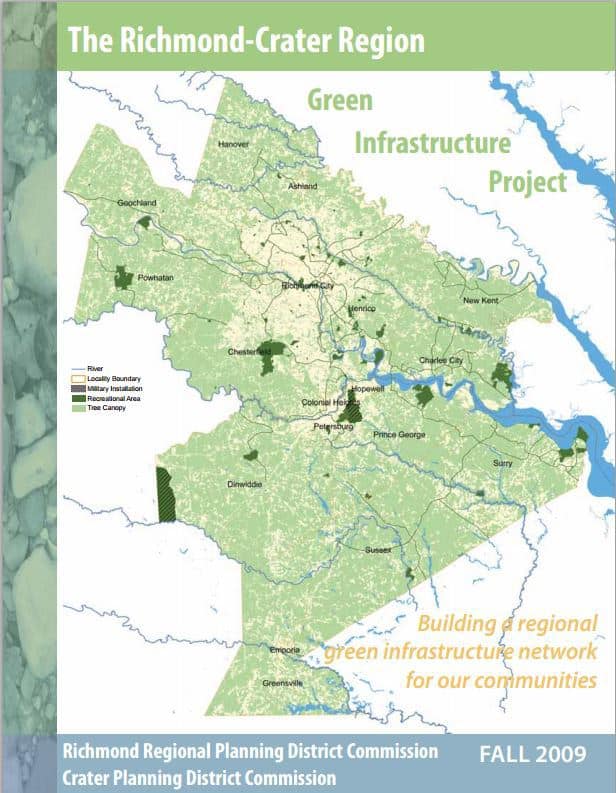Between October 2008 and October 2009, the Richmond Regional Planning District Commission (RRPDC), the Crater Planning District Commission (CPDC), the Green Infrastructure Center, and the Capital Regional Land Conservancy undertook a cooperative project to document the Richmond and Crater Regions’ green infrastructure assets.
This summary report presents a resource for green infrastructure planning activities across and among the Richmond and Crater Regions. Included in the analysis are the following conclusions:
- The region’s forests are a renewable economic resource that purify the region’s air and water, prevent soil erosion, and support biodiversity.
- More than 2800 farms covering approximately 558,000 acres provide habitat, filter water, and sequester carbon as well as sustain the region’s agricultural economy. [USDA Census of Agriculture, 2007]
- Area trails, parks, and historical sites connect communities with the region’s rich natural and human history.
- State and federal wildlife areas provide habitat as well as opportunities for recreation, environmental education, and bird watching

